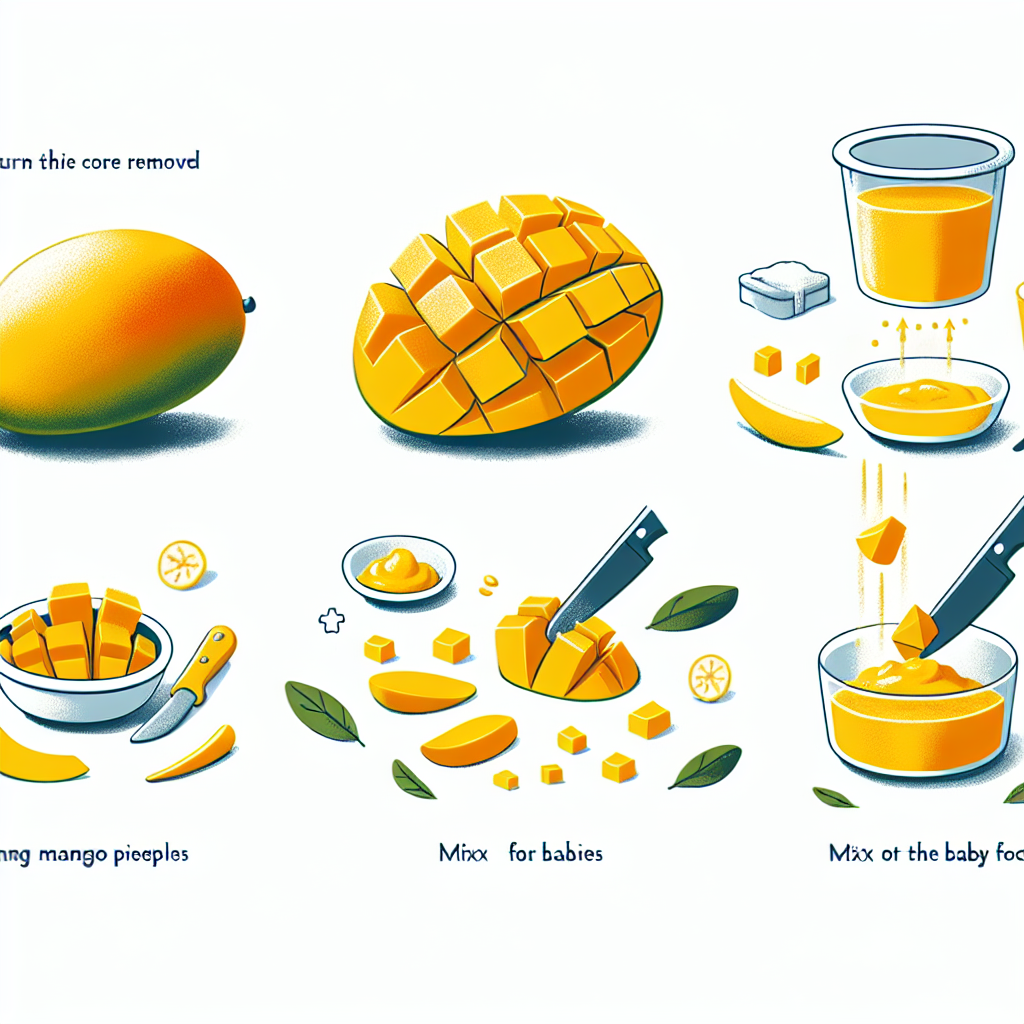Child Development: A Complete Guide to the Essential Stages
The Correct Preparation of Mangoes for Babies: A Parent's Guide
When it comes to diversifying your baby's diet, introducing fruit is a time full of excitement and delight. Mango is one of those exotic fruits that will not only delight little ones with its sweet flavor and soft texture, but is also an excellent nutritional choice. In this article, we will provide you with essential information and tips on how to properly prepare mangoes for your baby, so that you can ensure that your little one enjoys the benefits of this wonderful fruit in complete safety.
Motor Development
Introducing fruits such as mangoes into your baby's diet is an excellent way to stimulate their motor development. Because it's soft and easy to eat, it's great for chewing exercises and improving hand-mouth coordination.
To prepare the mango, be sure to choose a fruit that is well ripe but without soft parts that could indicate the beginning of spoilage. Wash the fruit well before starting the preparation. Cutting into pieces that fit baby's hands will allow them to explore the texture and develop their fine motor skills by trying to grasp the pieces of fruit.
Language development
Interaction with different textures and tastes can also be a stimulus for language development. Describe to your baby what they are eating, using words like 'soft', 'sweet', 'juicy' to build vocabulary and encourage word recognition and repetition.
It is particularly important that the fruit be peeled and pitted. Small, rounded pieces are dangerous, so before giving your baby mango pieces, make sure they are cut into long strands that are easy to grab and suck.
Nutrition and Benefits
Mangoes are an excellent source of vitamin C, vitamin A, and fiber, all of which are essential for baby's health and development. Vitamin C contributes to the strengthening of the immune system, while vitamin A plays a crucial role in the development of vision.
To preserve as much of the nutrients as possible, mangoes should not be cooked. But if your baby is at the beginning of diversification and needs a softer consistency, you can puree the mango until it reaches the desired consistency.
Food Safety
Safety is always a priority when it comes to baby food. Always be present while the baby eats mango or any other new food introduced so that you can intervene quickly if necessary.
Before you start diversifying, talk to your pediatrician about possible food allergies and test mangoes in small amounts to monitor for any side effects.
Mango preparation
To get the most out of mango nutrients, choose a ripe fruit, it will also be easier to prepare and sweeter. After washing the fruit, cut it lengthwise near the stone, then peel each half. You can then cut strips or scoop out pieces with a spoon.
Simple Mango Recipes for Babies
If you're looking for ways to introduce mangoes into your baby's diet, try combining mangoes with other fruits to make a delicious puree or mixing them with plain yogurt for a quick and healthy dessert. Freeze mango puree in special shapes to make refreshing and fun snacks, ideal for hot summer days.
Conclusion
Mango is more than just a delicious fruit; it is a rich source of essential nutrients that can boost your baby's development in many ways. From motor development to language and immune system development, mangoes offer numerous benefits. Follow the safety and preparation steps outlined above, and you'll be able to easily and safely introduce this tropical fruit into your little one's diet.
If this article was helpful to you, don't forget to visit the other sections of our store for more tips and tricks dedicated to the healthy growth of your child. Or subscribe to our newsletter for the latest news and advice from the world of parenting.














































































































































